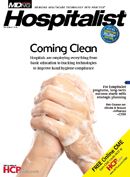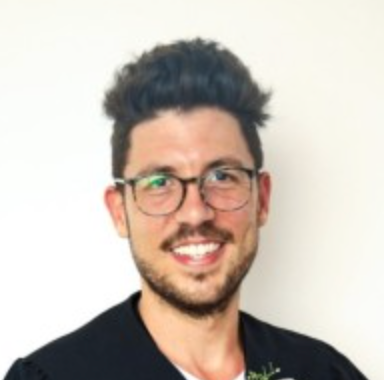Publication
Article
Featured Hospitalist: Vineet Arora, MD
Taking the Pulse of Hospital Medicine
In this interview, we speak with Vineet Arora, MD, one of the top researchers in hospital medicine, about best practices in patient handoffs, caring for the elderly, the need for improved communication among providers, chronic disease management, and the top priorities for teaching hospitals in 2011.Arora is associate professor in the department of medicine and associate director of internal medicine residency at the University of Chicago’s Pritzker School of Medicine. She also serves as assistant dean for scholarship and discovery.
MDNG: One of the key focuses of your work has been patient safety. Tell us about some of the research you’ve done in this area.
Arora: We focus a lot on care transitions and handoffs. Some of my earlier work focused on resident fatigue and duty hours, and a lot of the issues around duty hours really center on handoffs. So that’s how I got involved thinking about communication—how do people communicate in the hospital, and how can we improve that through best practices; how can we train people to not only give information better, but also to receive it.
MDNG: What are some of the best practices that have emerged?
Arora: Some of them are setting a dedicated time and location for the handoff, and making sure you prioritize patients so that you’re focusing your time on the ones that are most sick. There’s a tension between too much information and too little information, so it’s about striking the right chord where you’re giving the most relevant information and you’re really trying to prepare the person who is receiving the patient. You need to be thinking about what they need to know in order to care for the patient over the next shift.
It’s also important to avoid vague language, such as ‘today, tomorrow, or yesterday,’ and focusing on concrete language and concrete directions—not only what to do, but also what to anticipate.
The last thing would be to confirm receiver understanding—things like asking encouraging questions or having the receivers use read-back to try to clarify what they took away from the handoff.
MDNG: Another area you’ve been involved with is improving the care quality of hospitalized older patients. What have you found in your research in terms of discharges and care transitions?
Arora: For care transitions, one of the things we know is that a lot of things fall through the cracks, particularly for seniors. And that having the primary care physician in the loop is very important.
The other thing to think about is the process that can be done in the hospital setting to improve care—things like optimizing nutrition status and preventing harm through pressure ulcer prevention. Older patients are often at risk of harm from hospitalization itself; we call that the hazards of hospitalization. So although they come to the hospital to recover, they often actually get sicker. It’s really important for hospitalists to watch out for these hazards, which include things like hospital-acquired infections from Foley catheters, bedsores, clots, deep vein thrombosis from lying in bed too long, and poor nutrition, as well as communication errors and medication errors.
One of the things we’re trying is to use a checklist for older hospitalized patients to try to promote better adherence to these processes.
MDNG: Another key issue today is communication between hospitalists and primary care physicians. What is the hospitalist’s role in providing primary care, and how do you see that evolving down the road?
Arora: Right now, there’s a big focus on patient-centered medical homes and accountable care organizations, with the focus on more team-based care where you have, perhaps, incentives at the organizational level, to coordinate care among hospitalists and primary care physicians [PCPs]. I think we’re going to see more hospitalists forming alliances with primary care groups in order to really coordinate care at a lower cost, because that’s really the incentive around a lot of what’s happening with health care reform.
Currently, most hospitalists tend to focus just on that hospital episode, but I think we’re going to start seeing more focus on the discharge and beyond, on things like home health bridging the patient back to their PCP.
It’s a matter of putting all of the pieces together, and making sure you have an infrastructure to support that, including a strong health IT infrastructure, so you have the appropriate records and ease of communication with PCPs. Some of this has to happen at the organizational level, but certainly I think we’re going to start to see more and more of it.
MDNG: What do you think is the hospitalist’s responsibility in terms of helping patients more effectively manage chronic conditions such as diabetes or asthma?
Arora: I definitely think hospitalists have a role in educating patients about preventable diseases, especially when they’re hospitalized for those conditions; for example, things like medication adherence for asthma or COPD, or refraining from bad habits like smoking and alcohol use. I think these are very germane to hospital care. One of the things we’ve done here is start to really think about the component of prevention that occurs in the hospital. Some of that prevention occurs to prevent adverse events from happening in the hospital, and some of that is to empower people to take better care of their health after they leave the hospital.
MDNG: Tell me about your role in mentoring younger physicians and students. What has the experience been like so far?
Arora: I have really enjoyed mentoring over the years and consider my mentees to be crucial to any success our team has. For me, mentoring makes scholarly work more enjoyable. I do now have a formal role. As the assistant dean for scholarship and discovery, I help connect students to mentors. Our students are required to complete a mentored scholarly project prior to graduation. The idea is to encourage creativity and lifelong approach to scholarly inquiry. We actually have different tracks, and some of those tracks are very relevant to hospital care, like quality and safety, medical education, clinical or social science. Some of the things we teach are how to choose a project and a mentor that fits with your interests, basics of the scholarly process, and the skills to communicate that work to a broader audience, both in medicine and out of medicine.
MDNG: What’s your involvement in developing curriculum for students?
Arora: I serve on a committee that helps to steer the curriculum, especially some of the most recent innovations. While some of my work focuses on scholarship and discovery, the curriculum has been evolving to include more time for reflection, earlier exposure to clinical medicine, use of technology, etc. I also do a lot of teaching around patient safety and quality improvement that we’ve enhanced not only in our medical school, but also in our residency.
MDNG: What do you think the biggest priorities will be for teaching hospitals in the next year?
Arora: I think the biggest issue for teaching hospitals will be how to adhere to the shorter residents work hours. I think it’s very easy for a lot of hospitals to bring in hospitalists as sort of a magic bullet that’s going to save everything, but the truth is, the same issues that apply to residents—workload, fatigue, etc—that lead to errors, also apply to hospitalists. So, it’s important to have hospitalists not just be the default solution, but also participate in those discussions over how patients will be cared for and garner the necessary resources to implement the solution.






